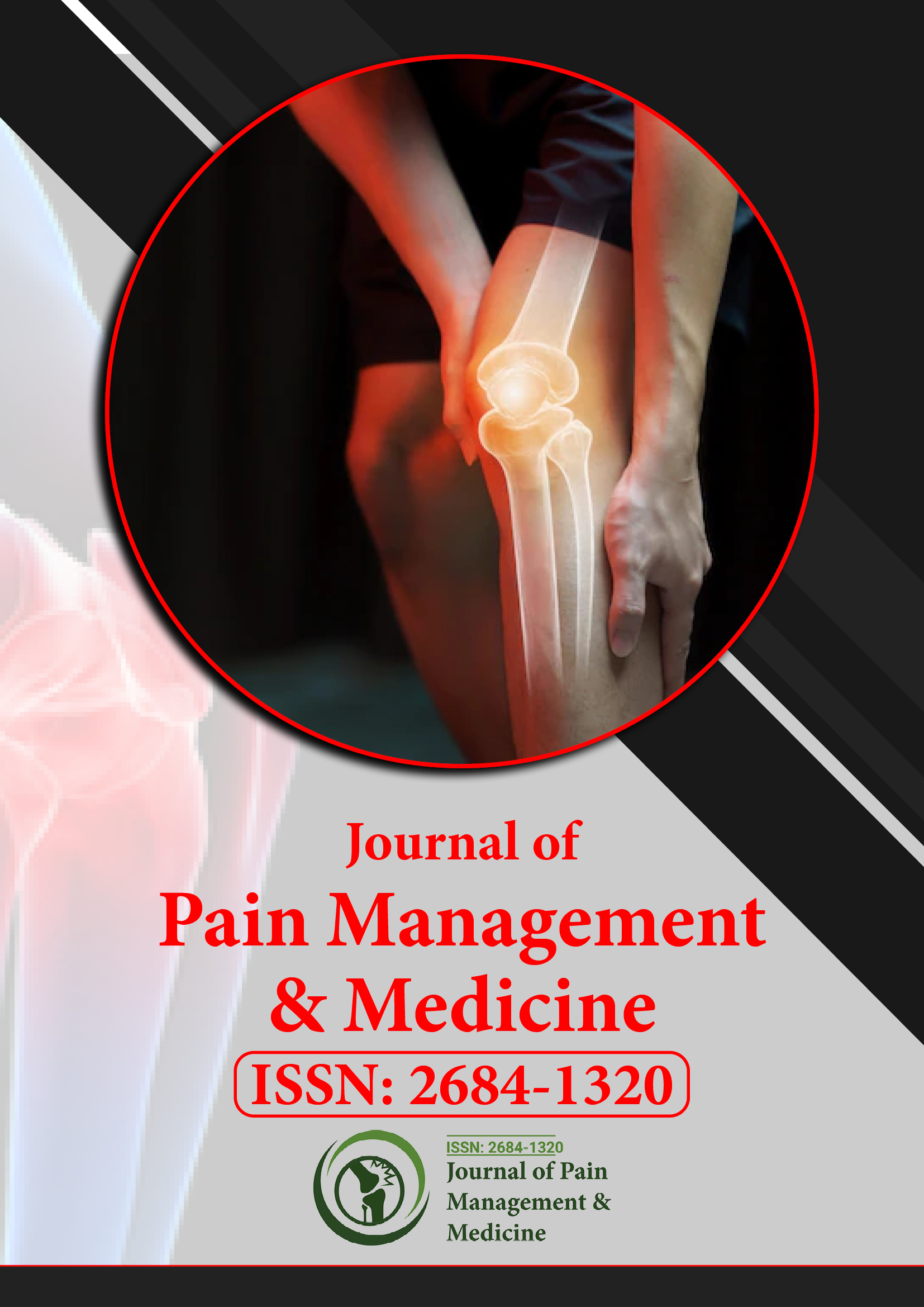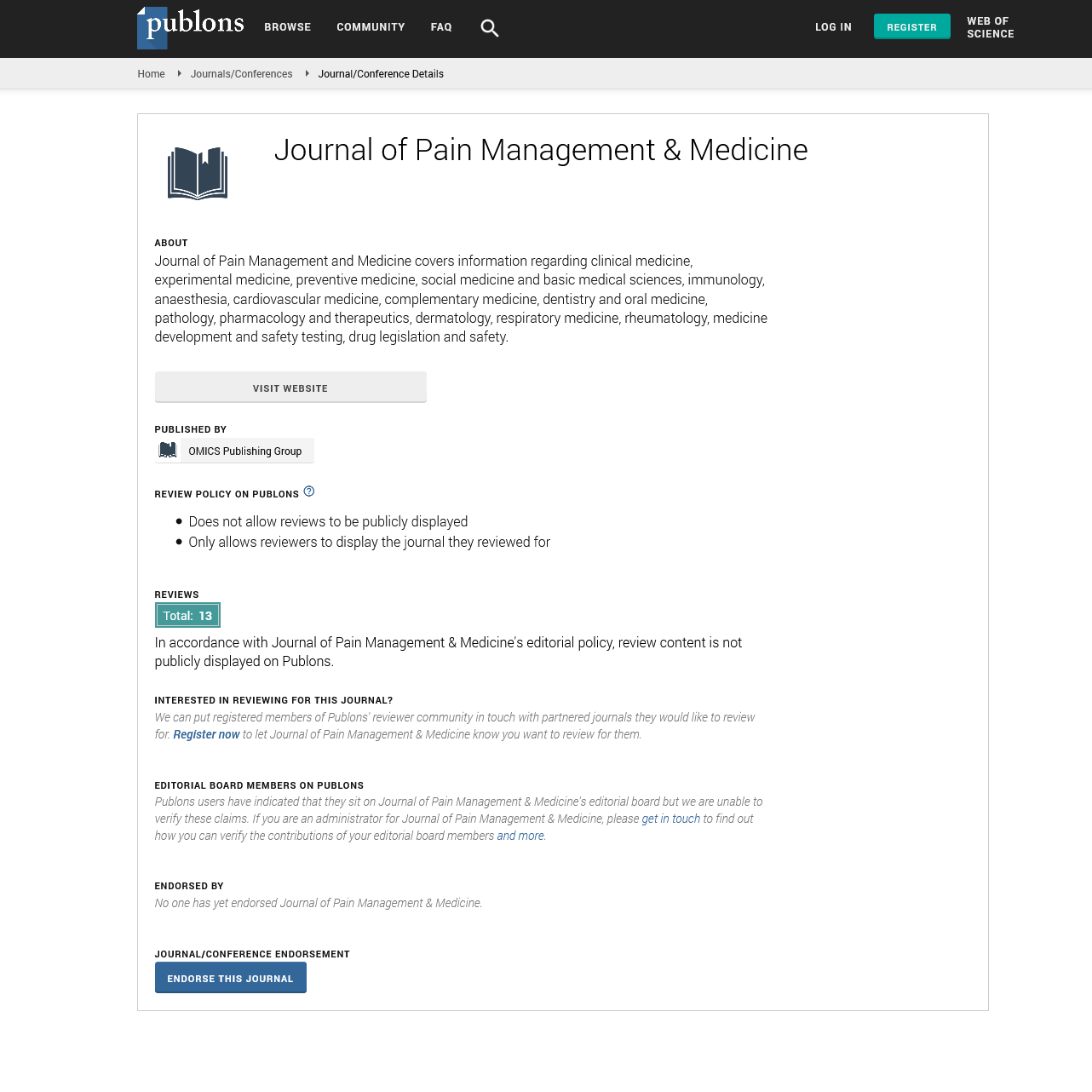Indexed In
- RefSeek
- Hamdard University
- EBSCO A-Z
- Publons
- Euro Pub
- Google Scholar
- Quality Open Access Market
Useful Links
Share This Page
Journal Flyer

Open Access Journals
- Agri and Aquaculture
- Biochemistry
- Bioinformatics & Systems Biology
- Business & Management
- Chemistry
- Clinical Sciences
- Engineering
- Food & Nutrition
- General Science
- Genetics & Molecular Biology
- Immunology & Microbiology
- Medical Sciences
- Neuroscience & Psychology
- Nursing & Health Care
- Pharmaceutical Sciences
Editorial - (2021) Volume 7, Issue 3
Physiology of Pain and Aversive Motivation
Keiko Roza*Received: 08-Jul-2021 Published: 29-Jul-2021, DOI: 10.35248/2684-1320.21.7.e108
Description
The comic and at some Philosopher Jerry Seinfeld on his show Comedians in Cars Getting Coffee given an especially clear depiction of the capacity of torment: " Pain is knowledge rushing in to fill a gap. When you stub your toe on the foot of the bed, that was a gap in knowledge. The pain is a lot of information really quick. That’s what pain is." What he stresses is that the main part of agony is to deliver learning and inspiration. The investigation of agony has truly been drawn closer as a tactile issue from two finishes. On the info side, broad exploration in rodents has recognized how various sorts of harmful boosts are handled and force is encoded by essential afferent nociceptors and spinal rope circuits intervening nociception. Supraspinally, human and rat tests have zeroed in on how tangible and emotional characteristics of agony are prepared in the cortex and other forebrain frameworks. These examinations have as a rule inspected how cerebrum areas encode improvement force, area and passionate quality (in people) or how synaptic availability and neural preparing changes following acceptance of creature models of persistent torment. Be that as it may, these endeavors have commonly regarded torment as a tangible issue (yet with enthusiastic characteristics) and there has not been a coordinated exertion to comprehend its most fundamental capacity, to persuade and change conduct. An area in which some real advances in understanding have been made is that of the development of nociceptive systems and the impact of early exposure to pain. Four of our contributors address different aspects of this — from childhood chemotherapy and peripheral neuropathy, the effects of early exposure to pain, nociceptive processing and descending controls, to mood, pain and sleep in adolescents, bringing the coverage of this emerging area up to date. Input from the primary afferentsis key to many of the central changes that occur as a consequence of the types of peripheral injury that can lead to chronic pain, and they continue to drive pain in many people. The CNS changes consequent to this peripheral input are also obviously fundamental to the initiation and maintenance of chronic pain.
Many of the reviews in the issue concentrate, unsurprisingly, on the huge advances made in this area over the last thirty years. There have been incredible steps forward in our appreciation of the different classes and functions of spinal projection and interneurons, and in the functions of spinal and higher centres circuits, both inhibitory and facilitatory, in the processing of both pain and itch. We now better understand the common and distinct mechanisms underpinning multiple different pain states from inflammatory to skeletal and neuropathic pain. We are beginning to dissect mechanisms in the most intransigent of pain states, such as fibromyalgia, with the incredible tools advanced imaging technology is giving us.
While sensory-aversive result affiliations happen in the amygdala, different frameworks, for example, the basal ganglia parse which choices and activities lead to aversive outcomes, purported instrumental evasion learning. On a hypothetical level, there has been banter about whether creatures are equipped for aversive instrumental learning or regardless of whether their practices in the aversive space are administered by more reflexive protective reaction frameworks. In view of ongoing examinations, Cain contends compellingly that instrumental cycles underlie aversion learning and spreads out future headings for this space of exploration. The basal ganglia has normally been concentrated with regards to appetitive learning, yet the habenula has arisen as one piece of the basal ganglia which represses ventral tegmental region (VTA) dopamine cells to advance aversive learning. Jhou and Vento depict how the rostromedial tegmentum (RMTg) is fundamental to aversive learning by going about as an interface between the habenula and the VTA to empower aversive upgrade incited restraint of dopamine neurons. Relatedly, Stephenson-Jones talks about arising proof on how extraordinary subregions of the basal ganglia direct habenula work and work with aversive instrumental learning. At long last, Minami examines the job of the bed core of the stria terminalis and explicit neuromodulatory and synapse frameworks there in torment instigated learning.
Citation: Roza K (2021) Physiology of Pain and Aversive Motivation. J Pain Manage Med. 7:e108.
Copyright: © 2021 Roza K. This is an open-access article distributed under the terms of the Creative Commons Attribution License, which permits unrestricted use, distribution, and reproduction in any medium, provided the original author and source are credited.

